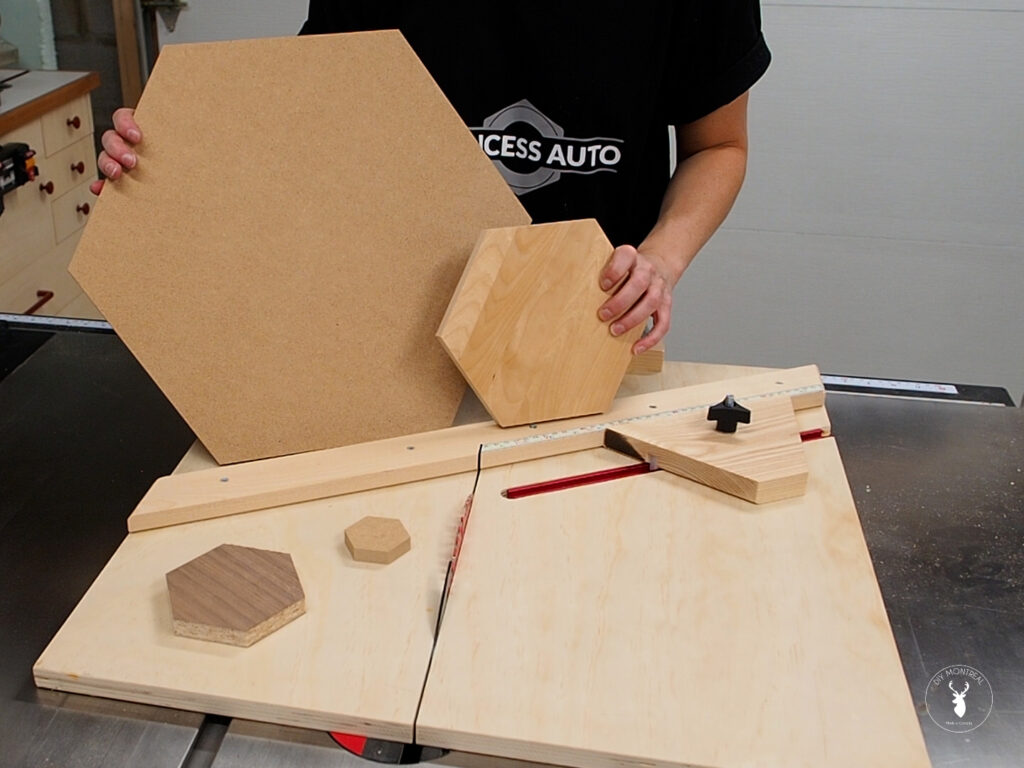
There are a few ways to cut hexagons out of wood, like a table saw with a miter gauge, a band saw or miter saw. If you want to batch out several hexagons and make them consistent, you need a jig. That’s why a couple years ago I threw together my original hexagon cutting jig. It worked great, providing consistent and accurate results. The only issue is that it only cuts hexagons one-size.
UPDATE: Looking for Looking for a jig that can cut any polygon (like pentagon, octagon and hexagon)? Check out my polygon cutting jig. It can cut any shape, any size!
Today I want a jig that will cut hexagons any size, big or small. That’s why I’m making this hexagon cutting jig 2.0. It’s adjustable to cut a wooden hexagon anywhere from 1-inch all the way up to 18-inches in diameter. And the best part is that once the adjustable stop is locked in, every hexagon I cut will be exactly the same!
Tools and Materials
- 3/4-inch premium plywood
- Hardwood like maple
- Plastic UHMW runners
- T-track
- 5/16 T-bolt
- 5/16 Star knob
- Washer
Get the Plans

Adjustable Hexagon Cutting Jig
To begin, cut a square piece of 3/4 premium plywood to use as the base. Next, make a pair of runners to fit the miter slots on your table saw, or use these UHMW (plastic) runners that I love to use for all my table saw sleds. You’ll want to drop in a few pennies or nickels to raise up the runners a bit above the surface.
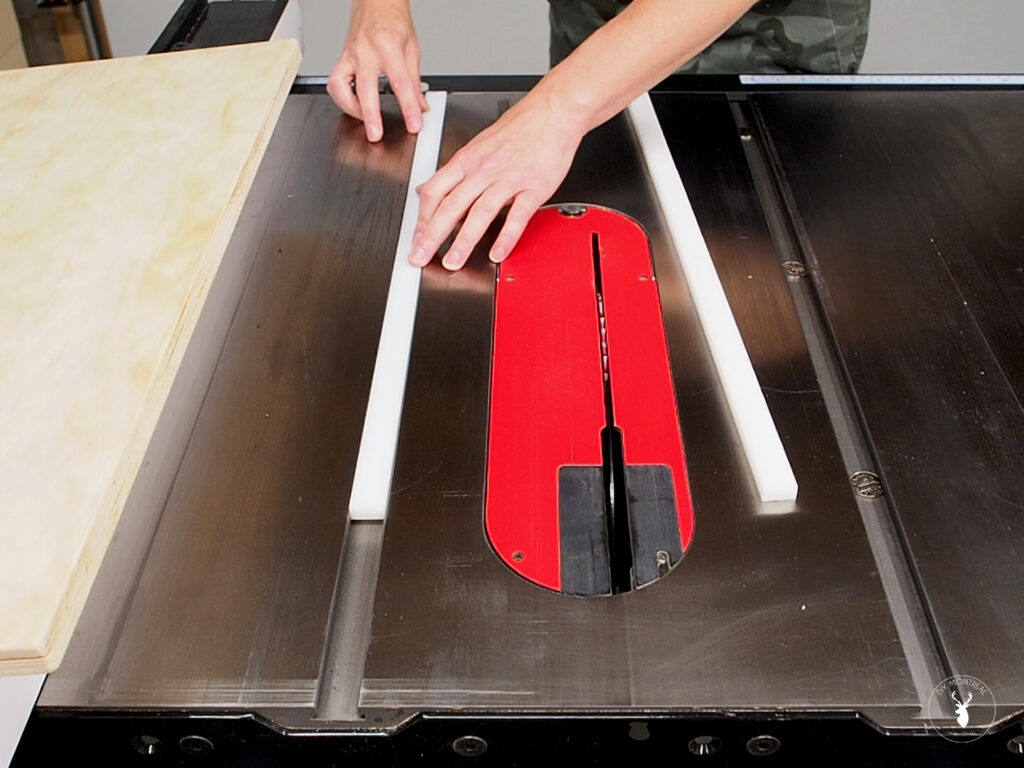
After that, apply a few dabs of super glue and position the plywood base on top. After about 30 seconds, you can pull up the sled and secure the runners to from underneath with countersunk screws.
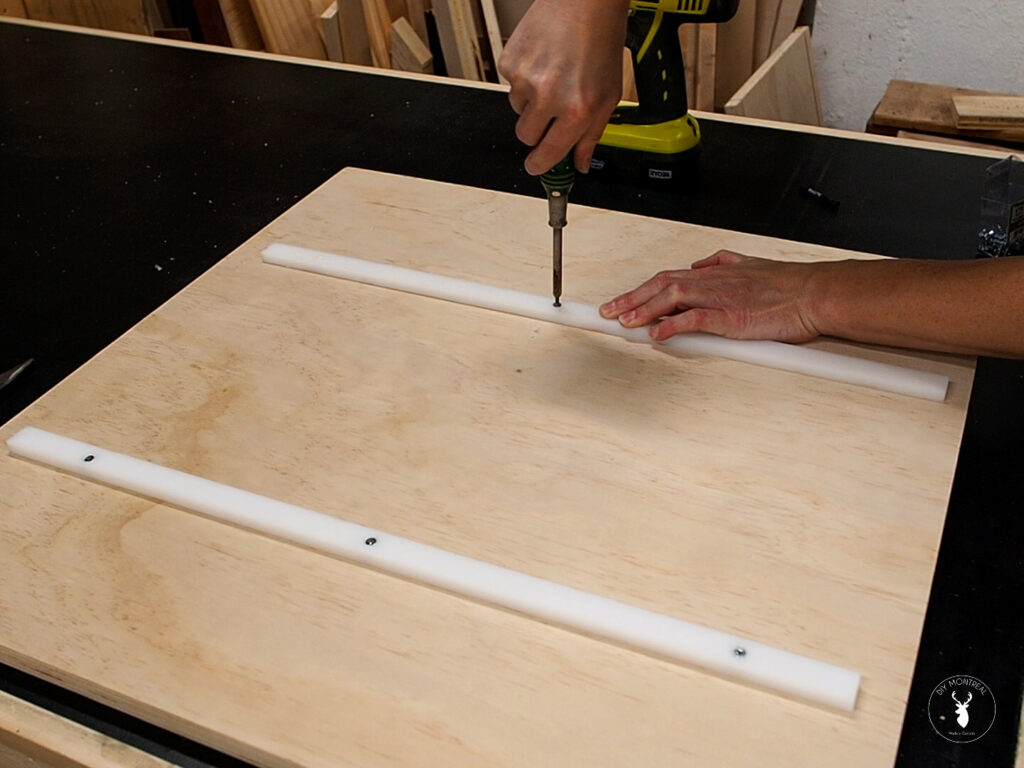
Now back at the table saw, it’s time to cut the kerf, going about half way then stopping.
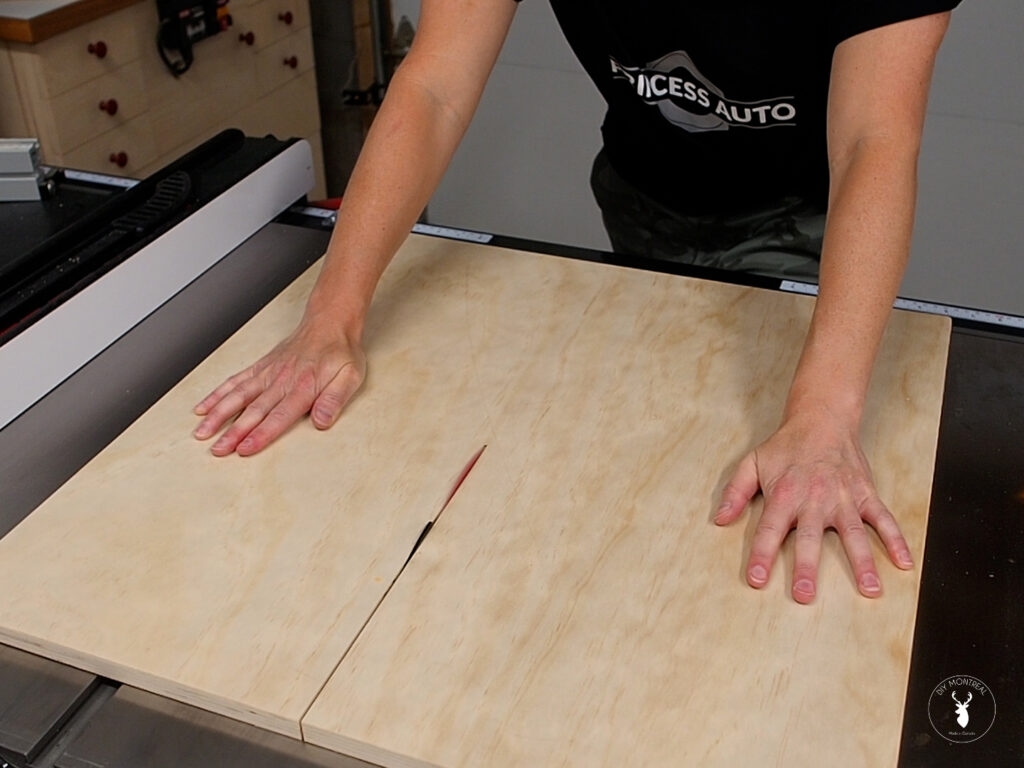
Next comes the most critical step: installing the fence. It is of utmost importance that you get the angle here just right, otherwise your hexagons won’t work. You can use a large ceramic tile to help position the fence, or cut a scrap strip of wood to use a reference like I did in the video. Either way, the fence must be set to an angle of exactly 60° to the right of the blade and 120° to the left.
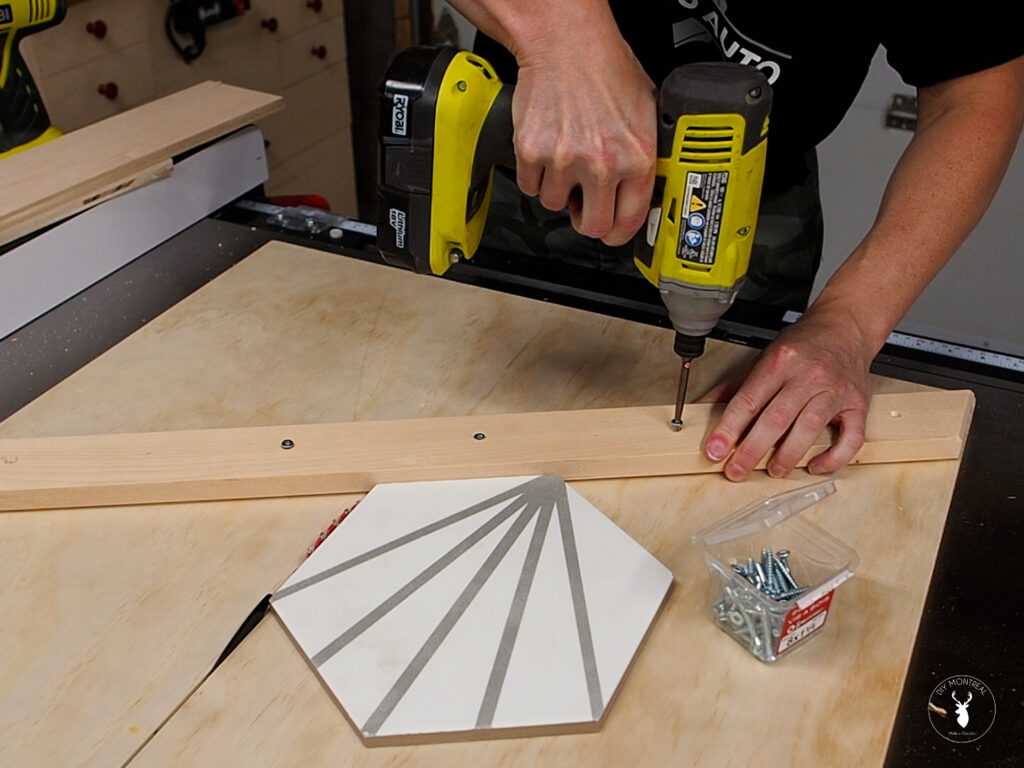
Adjustable Stop Block
At this point, with the fence secured to the jig, it’s time to get to work on the adjustable stop. You’ll want to make a dado into the sled’s base in order to embed a T-track. For this, I used a 3/4-inch straight bit running my router against the sled’s fence and stopping just short of the kerf line.
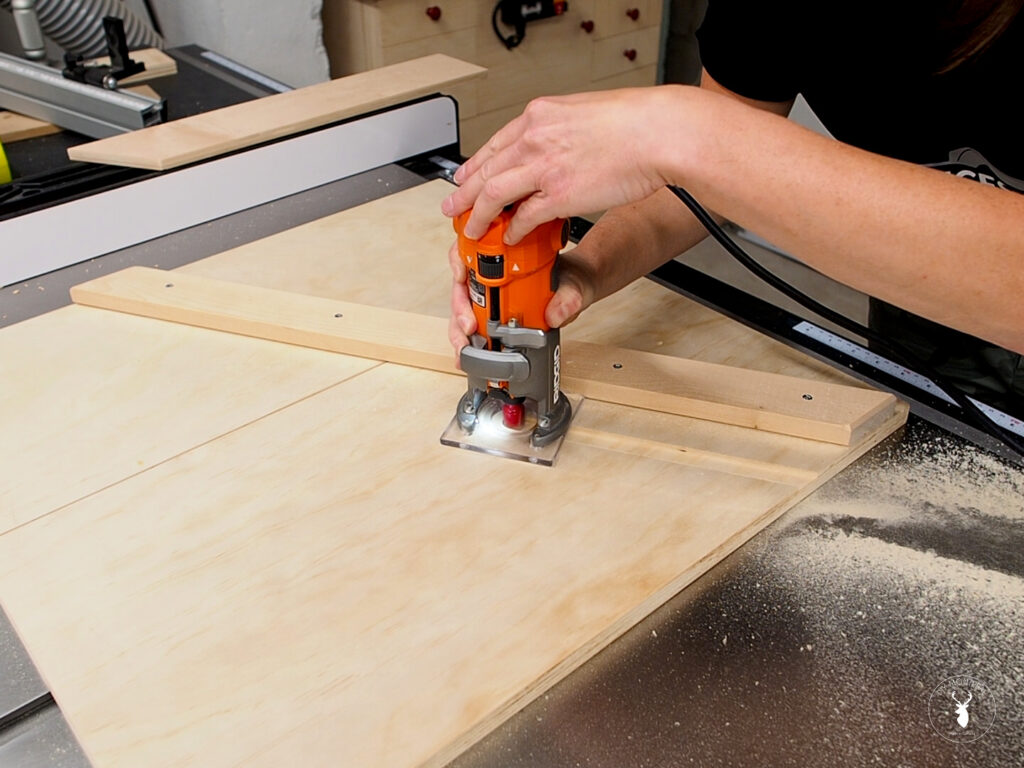
After a test fit to make sure the T-track is flush beneath the surface, go ahead and secure it in the dado using a dab of Gorilla glue.
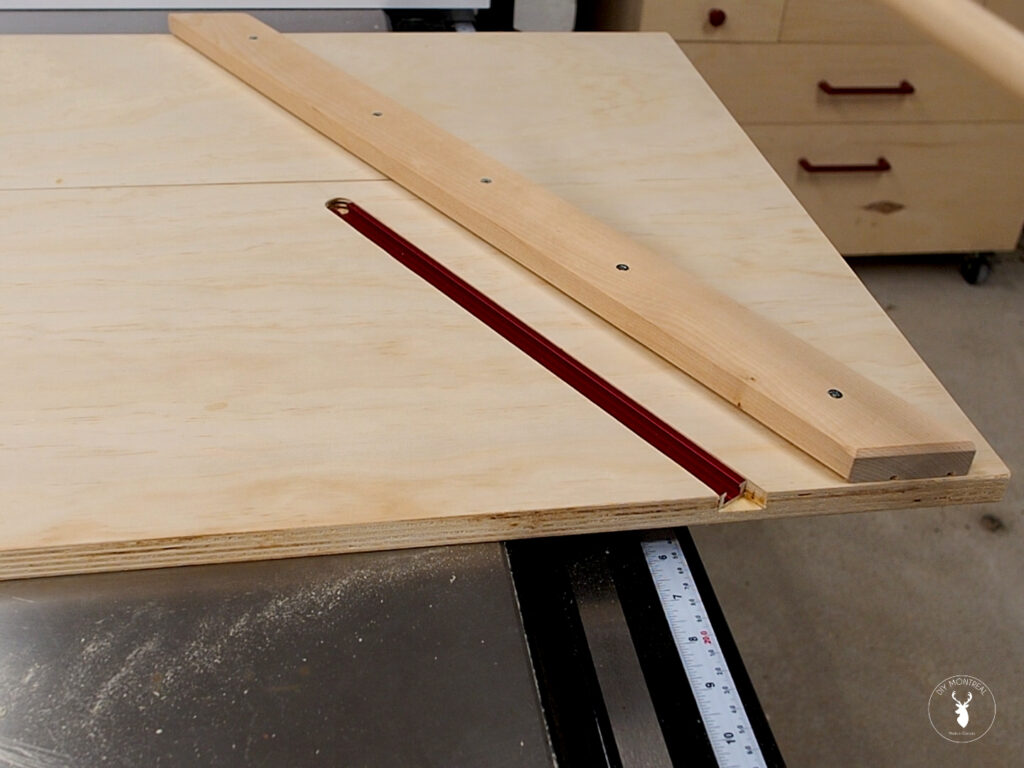
To make the adjustable stop block, I’m going with a design very similar to the one I made for my miter saw station. The first step is to cut a small dado. I did this on the table saw, progressively moving the fence over until the dado was wide enough.

Next I can cut each side at 60° to form a trapezoid. Again it’s critical to get this angle perfect, so use a digital protractor if you have one to dial in your settings on a test piece first.
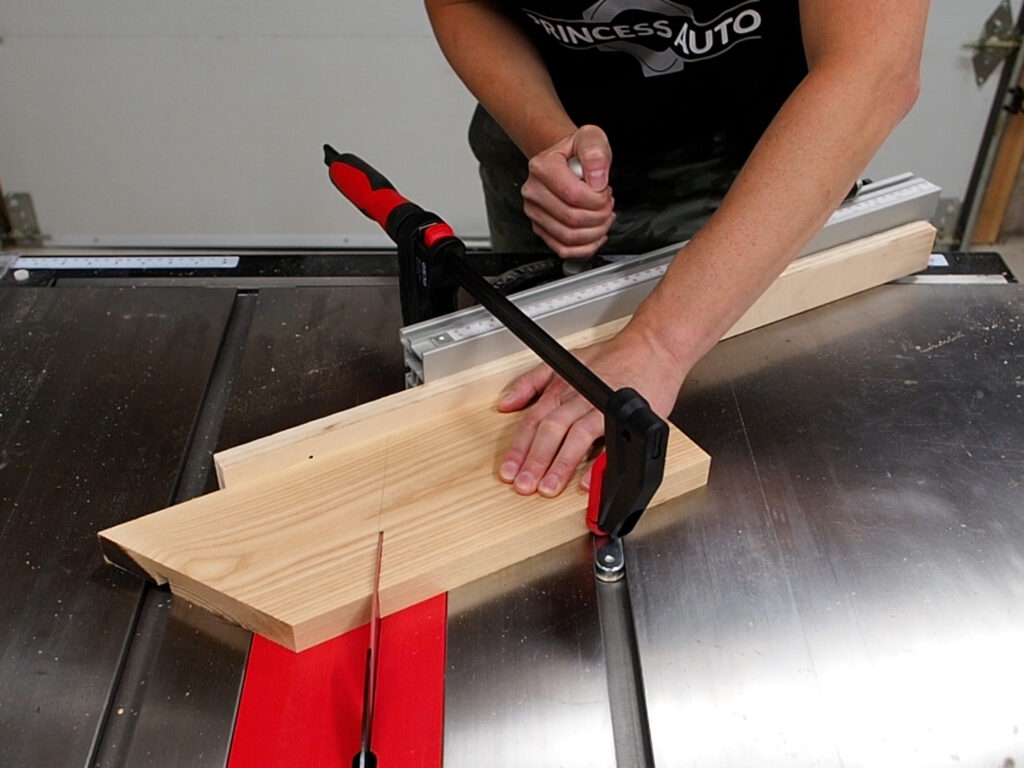
To complete the adjustable stop block, drill a hole through the dado on center using a 5/16 drill bit. Then secure 2 short pieces of leftover UHMW runner with some super glue.
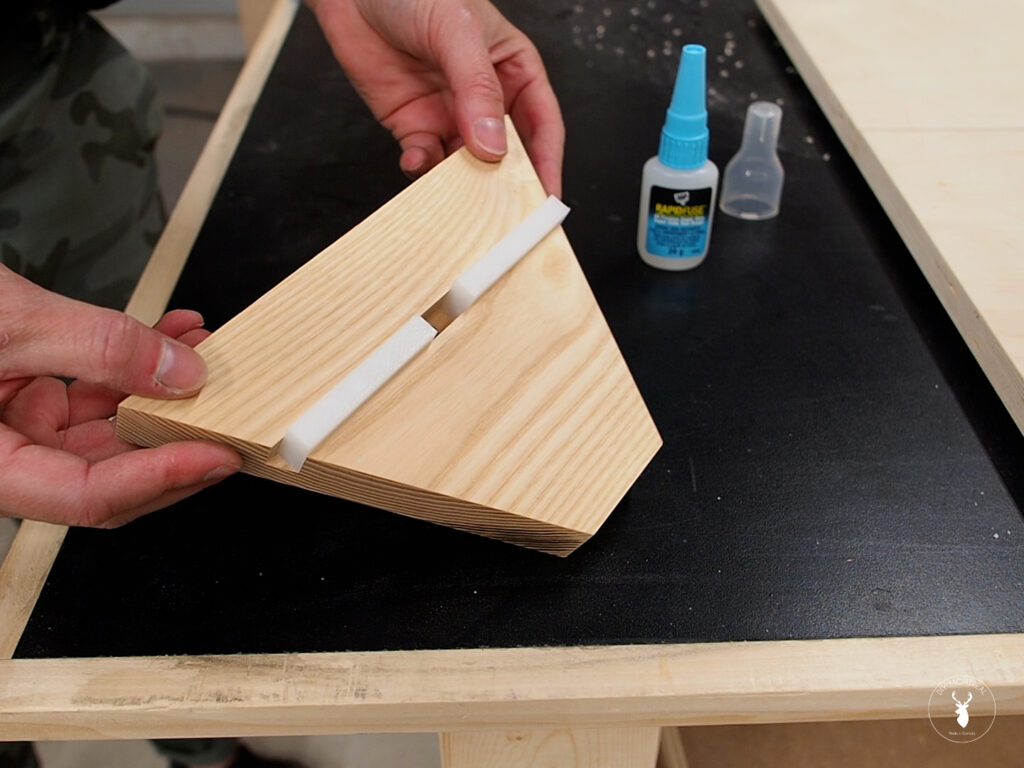
With that done, we can complete the jig by sliding a T-bolt into the T-track, then slip on the stop block and secure with a star knob. If you’re into that sort of thing, you can add a stick-on tape measure to reference your hexagon sizes.
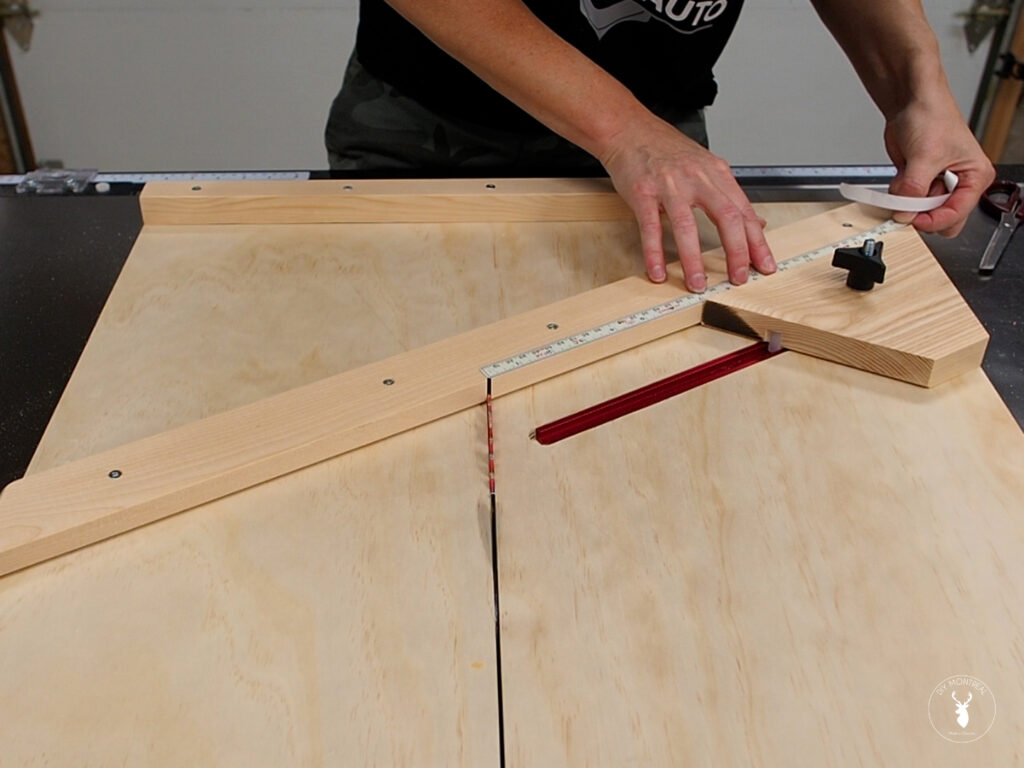
How to Cut Hexagons out of Wood
Using the jig is simple. First, you’ll want to start with a blank strip that’s similar in width to the hexagons you want to cut, and maybe a tad wider. Then, with the blank against the back fence, make the first cut to establish the starting angle.
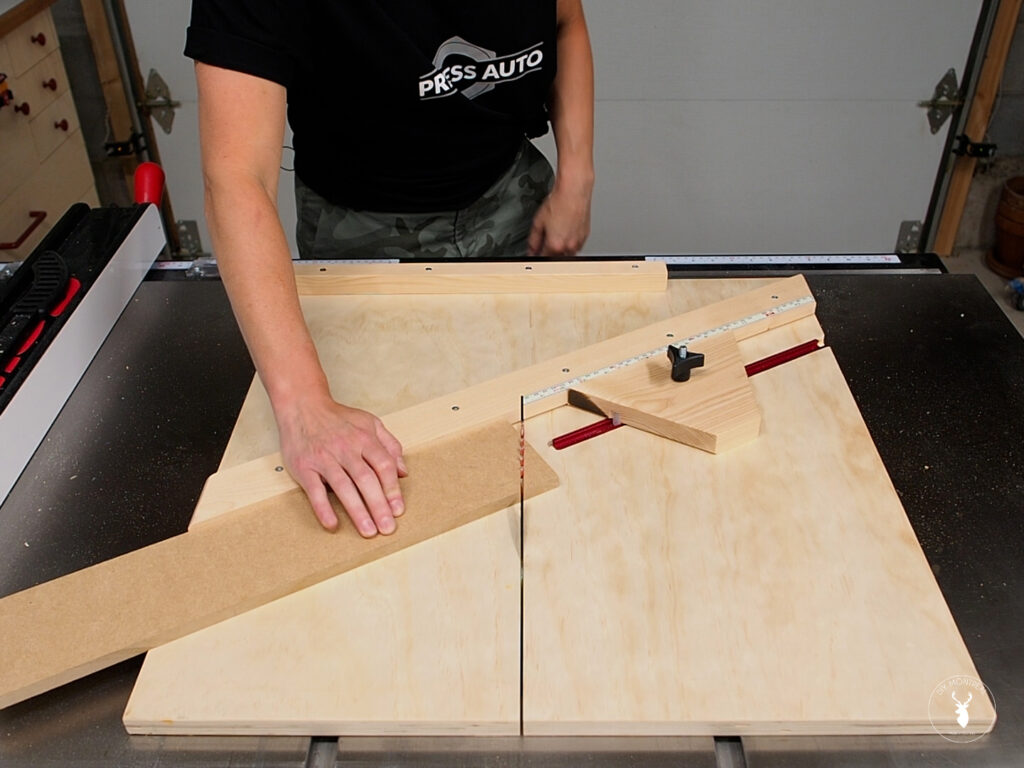
Next, flip over the blank and butt it up against both the back fence and the adjustable stop block. Make the cut. Rotate the piece clockwise and repeat until you have a perfect hexagon.
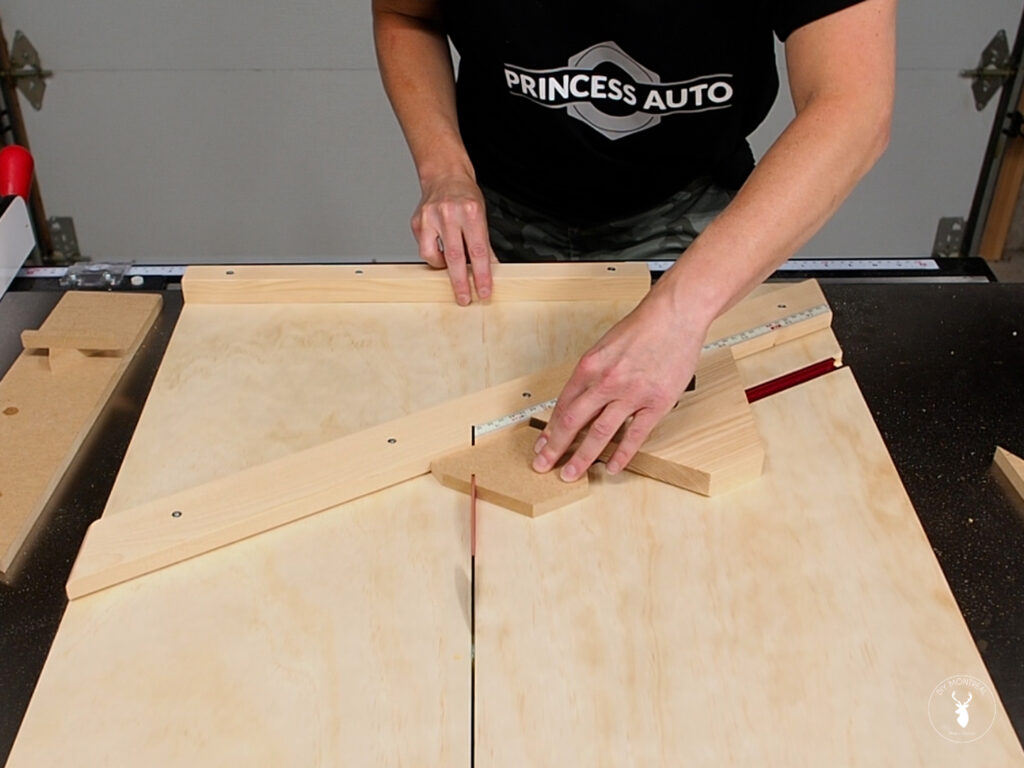
If the jig is accurate, you should be able to batch out perfectly identical hexagons.
